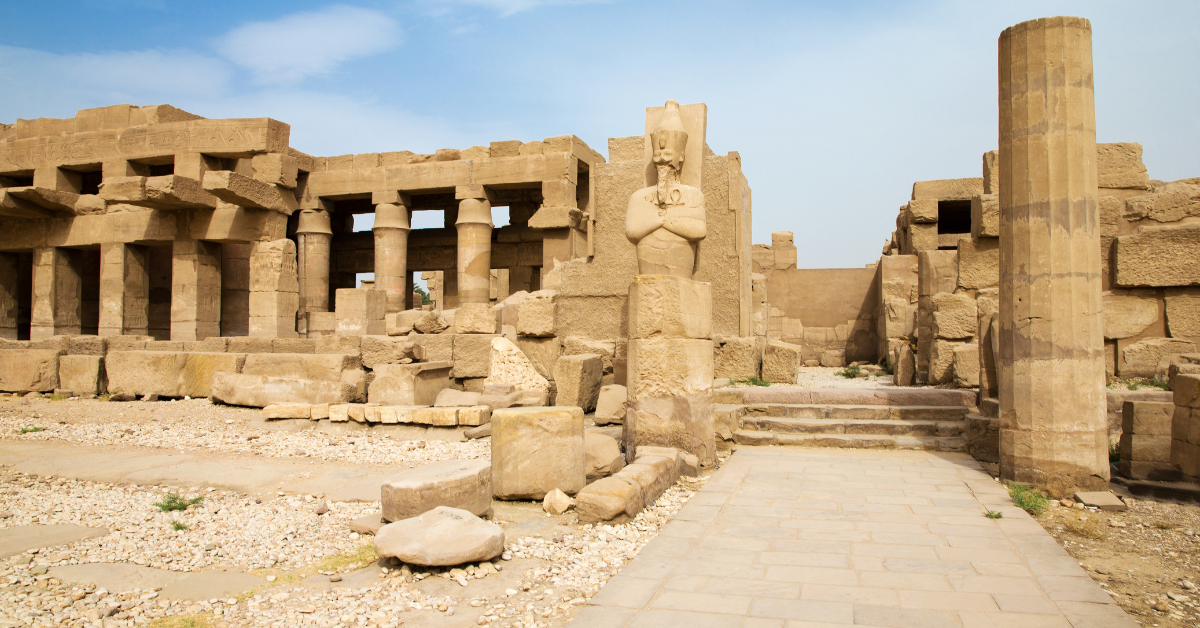Introduction
Two thousand years ago, around the 1st century BCE, Egypt was experiencing a transformational period in its history. The Ptolemaic Dynasty, founded by one of Alexander the Great’s generals, had ruled Egypt for nearly three centuries, and the Roman Empire was on the rise. This era, known as the Greco-Roman Period, was marked by the blending of Egyptian, Greek, and Roman cultures, which shaped the art, religion, and daily life of the people living in Egypt at the time. This article explores life in Egypt during this period, focusing on the political landscape, cultural synthesis, architectural innovations, and religious practices.
Political Landscape: From Ptolemaic Rule to Roman Conquest
The Ptolemaic Dynasty, established in 305 BCE following Alexander the Great’s conquest of Egypt, represented a significant shift in power dynamics within the region. The Ptolemaic rulers, of Greek origin, adopted Egyptian customs and style of governance, presenting themselves as the rightful successors of the native pharaohs.
The final ruler of the Ptolemaic Dynasty, Cleopatra VII, sought to maintain Egypt’s independence amid the growing influence of Rome. However, following her defeat alongside her Roman lover Mark Antony in the Battle of Actium in 31 BCE, Egypt became a province of the Roman Empire.
Under Roman rule, Egypt became an important source of grain for Rome, and the existing administrative systems were largely preserved, with Egyptian officials working alongside their Roman counterparts.
Cultural Synthesis: The Blending of Egyptian, Greek, and Roman Traditions
The Greco-Roman Period saw the fusion of Egyptian, Greek, and Roman traditions, which manifested in various aspects of daily life. Greek became the language of administration, and Hellenistic culture influenced Egyptian art, literature, and religion.
Egyptian art during this period incorporated Greek and Roman elements, such as the naturalistic portrayal of human figures and the use of perspective. Notable examples of this cultural synthesis include the Fayum mummy portraits, which combined traditional Egyptian funerary practices with Greco-Roman painting techniques.
Architectural Innovations: Temples, Cities, and the Lighthouse of Alexandria
The Greco-Roman Period witnessed the construction of new cities and monumental structures throughout Egypt. The city of Alexandria, founded by Alexander the Great and developed by the Ptolemies, became a center of learning and culture, rivaling Athens and Rome in its significance.
One of the most famous architectural achievements from this period is the Lighthouse of Alexandria, also known as the Pharos. As one of the Seven Wonders of the Ancient World, this enormous structure guided ships in the Mediterranean and symbolized the blending of Egyptian and Hellenistic architectural styles.
Temples built during this era, such as the Temple of Edfu, dedicated to the falcon-headed god Horus, and the Temple of Kom Ombo, dedicated to the crocodile god Sobek, showcase the integration of traditional Egyptian religious architecture with Greco-Roman elements.
Religious Practices: The Cult of Serapis and the Emergence of Christianity
The fusion of Egyptian, Greek, and Roman religious traditions during the Greco-Roman Period led to the development of new cults and religious practices. One notable example is the cult of Serapis, a syncretic deity that combined aspects of the Egyptian god Osiris with the Greek gods Hades and Dionysus.
During the later stages of the Greco-Roman Period, Christianity began to spread throughout Egypt. By the 4th century CE, following the Roman Empire’s adoption of Christianity, the majority of Egyptians had converted to the new faith, leading to a decline in traditional Egyptian religious practices.
Conclusion
Life in Egypt 2,000 years ago was marked by political upheaval, cultural synthesis, and religious transformation. As the Ptolemaic Dynasty gave way to Roman rule, the intermingling of Egyptian, Greek, and Roman traditions shaped the art, architecture, and daily life of the people living in the region. The legacy of the Greco-Roman Period endures in the form of the monumental structures and the rich cultural tapestry it produced, offering a fascinating glimpse into a period of interaction and exchange between some of the ancient world’s most influential civilizations.

